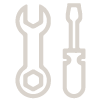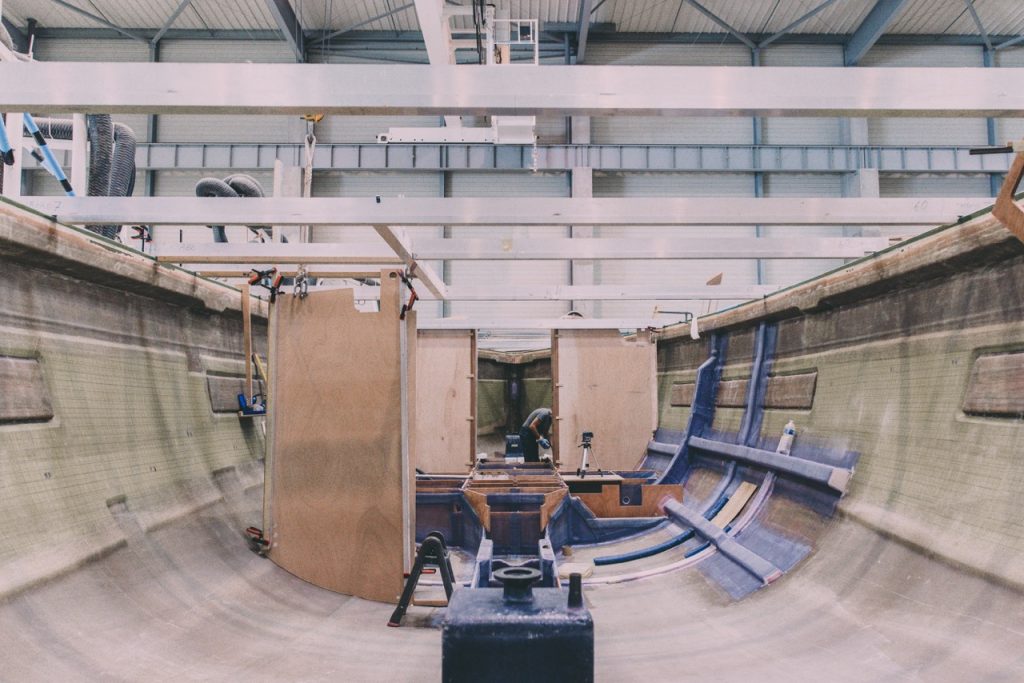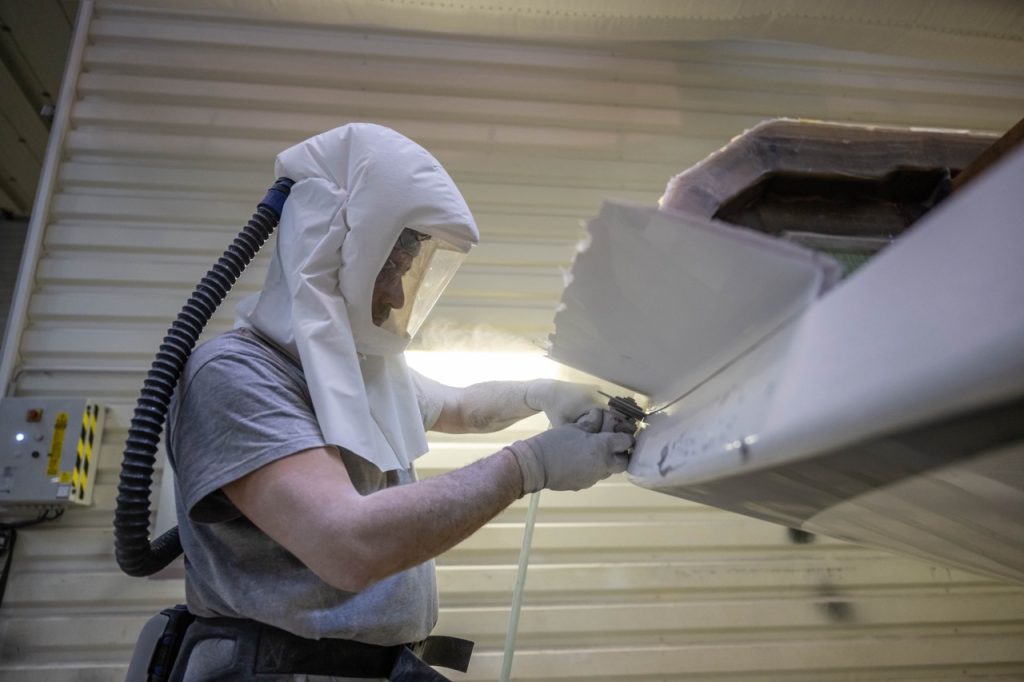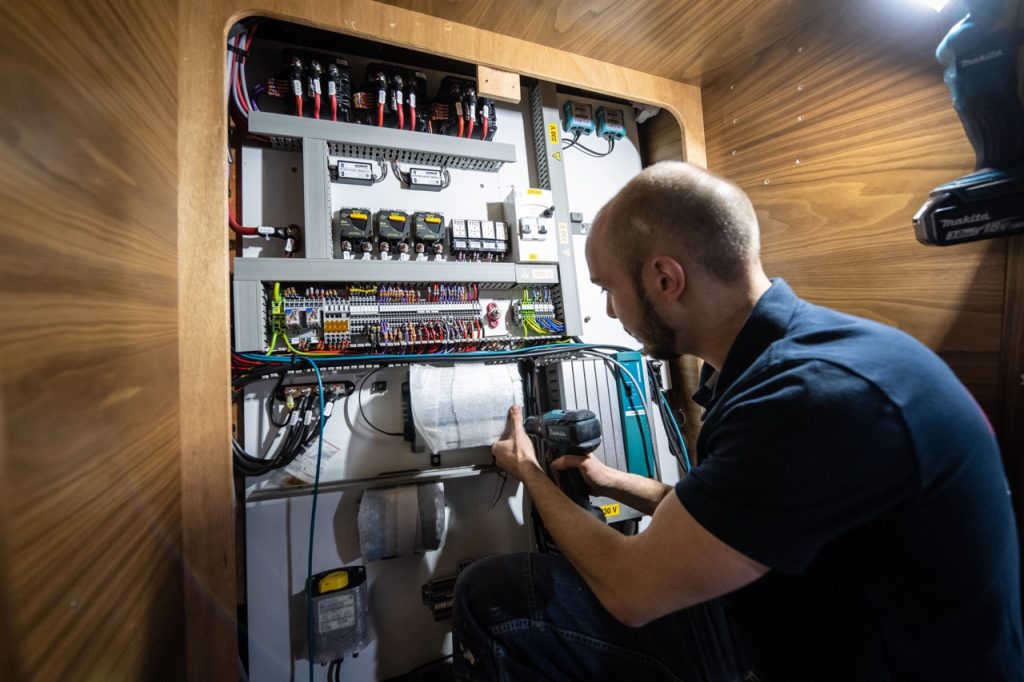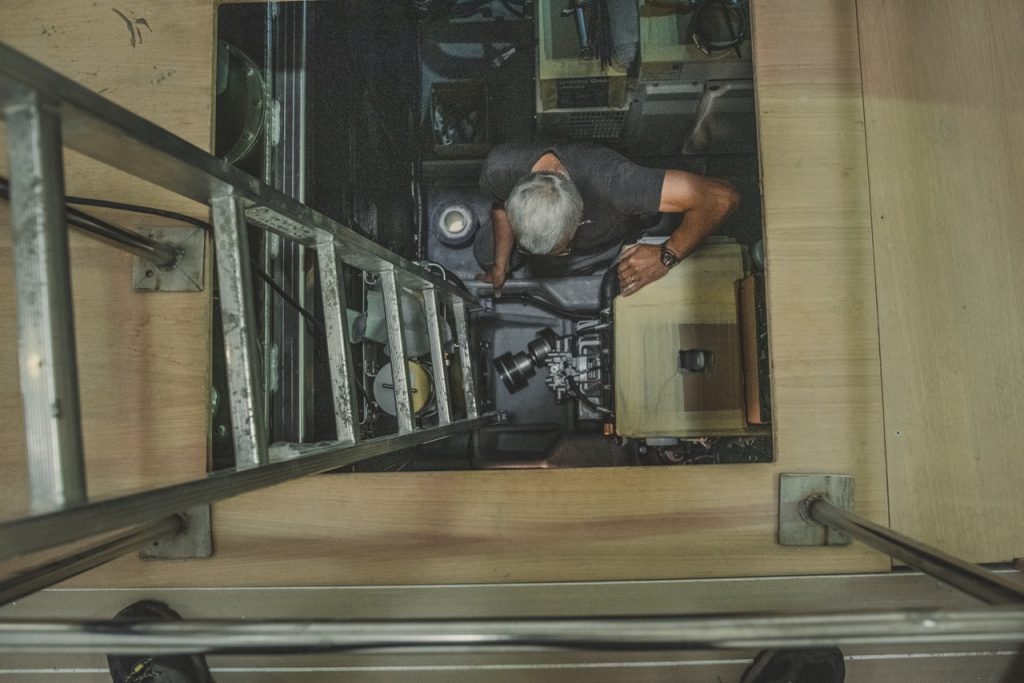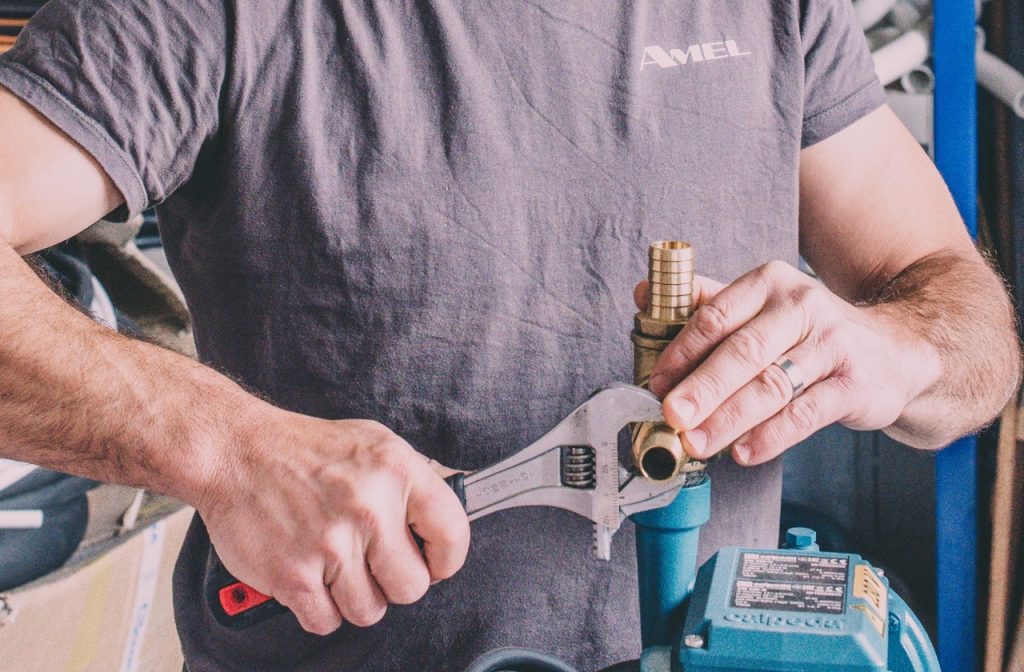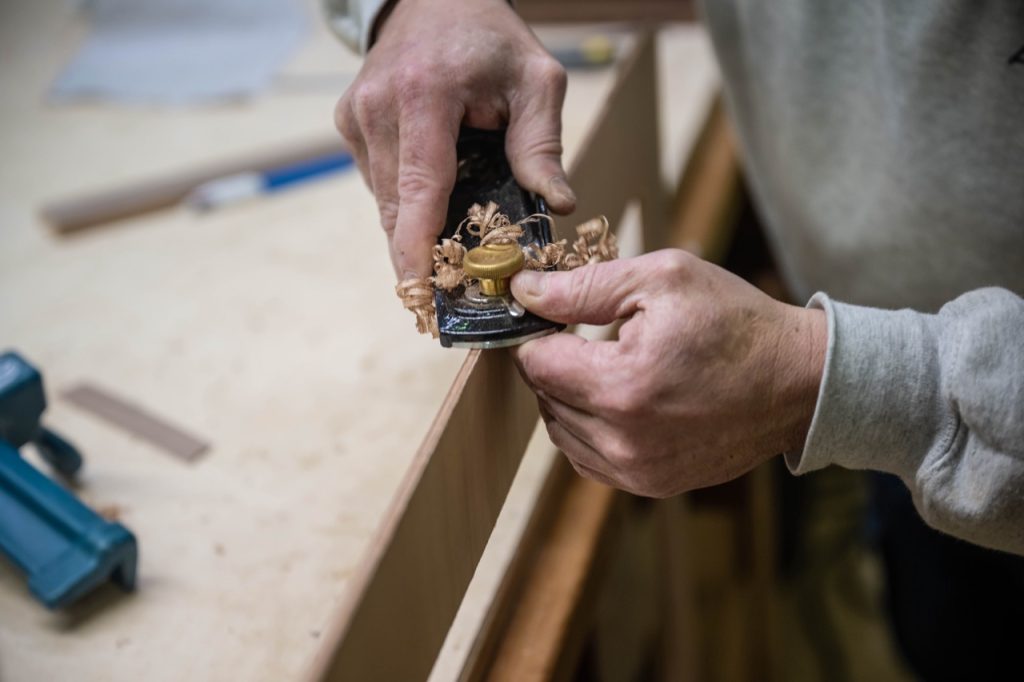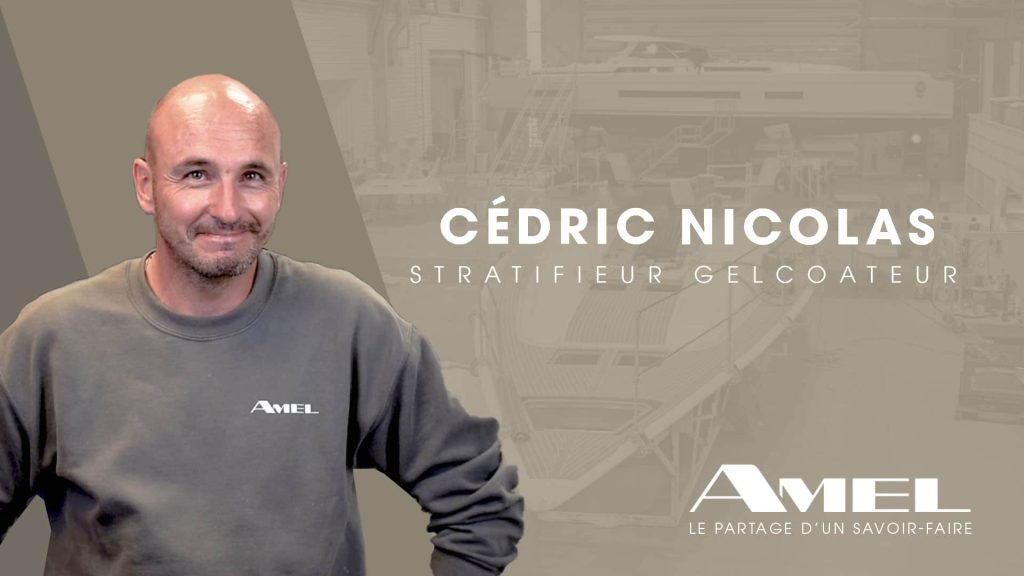PERPETUATING
THE AMEL SAVOIR-FAIRE
Tradition, Passion, Collaboration
For some 60 years, the AMEL spirit engendered by the Shipyard’s founder has been passed from generation to generation. Joining AMEL means joining a dedicated, dynamic team; it means contributing your skills and expertise to achieving the highest possible quality standards. Thanks to this team approach and commitment, the yachts we build are justly renowned for their robustness and their reliability.
AMEL Shipyard has a workforce of some 150 employees, working in more than 30 different professions. The construction of our yachts is largely carried out in our own workshops, with processes ranging from polyester lamination and vacuum infusion to fitting out the interior of the boats, as well as joinery and cabinet making, careful selection of yacht hardware, installation of electrical systems and sanitation equipment, and not forgetting the preparation and assembly of mechanical, motorised parts. In addition, the company’s activities encompass upholstery, finishings, and yacht preparation and, of course, fine-tuning and testing prior to delivery! We place great emphasis on working with local suppliers and service providers to guarantee quality and efficiency at every stage of the process.
In addition to those working at our Périgny site, we have multi-skilled technical teams based in the pleasure port of Les Minimes in La Rochelle, Le Marin in Martinique, and Hyères in the Var region of France. These teams are responsible for customer service operations such as repairs and maintenance.
For the smooth running of the company, other support services are also essential such as production (methodology, design office, etc.), logistics and purchasing, accounts, management, human resources, customer relations, sales, and even communications.
AMEL Shipyard believes in the importance of passing on savoir-faire. In fact, the company has adopted a Lean® management approach to continuous improvement, a system that has been in place since 2017; it has also introduced a number of ‘referents’, whose role is to support new arrivals, guiding them as they learn about and acquire the AMEL savoir-faire.
We are proud to introduce you to some of our areas of expertise… click on the icons below to discover the talent at work behind the scenes at AMEL Shipyard!
The AMEL team
LAMINATORS
Laminators are involved at the very start of the production process. They produce the various composite parts (hull, deck, small interior and exterior parts) that, together, give the boat its shape! Using a mould, they apply successive layers of fibreglass cloth and synthetic resin, either by hand or by vacuum infusion. They may also carry out other tasks, such as applying a paint called ‘gelcoat’ or even occasionally cutting fabric according to the dimensions indicated on plans.
- Laminator Gelcoater
- Parts Laminator
- Draper-Laminator
- Application of gelcoat by brush, roller or spray gun
- Contact lamination, vacuum infusion lamination
- Gluing, resin preparation, parts assembly, stock management, occasional fabric cutting
LAMINATE FINISHERS
Laminate finishers are part of the team of composite specialists. They are responsible for deburring all the polyester parts that have been removed from their moulds, as well as for cutting out the portholes, deck hatches and other openings in the boat. This requires a great deal of precision and care, as it is essential to ensure that the polyester parts can be assembled seamlessly, and that any glazing or vents fit perfectly into the pre-cut openings.
- Removing laminated parts from their mould
- Marking out cuts on parts using templates or drawings
- Preparing parts in deburring booth; deburring parts
- Housekeeping duties: cleaning, dusting, tidying up
MARINE ELECTRICIANS / ELECTRONICS TECHNICIANS
Marine electricians are responsible for installing onboard electrical systems. They prepare and install cables, circuit boards and panels following detailed electrical diagrams, whilst ensuring the reliability of the components used. Electronics technicians prepare the navigation, communication, and hi-fi equipment ready for installation on board the boat at the very end of the production process. These complex jobs require a high level of accuracy to ensure that all onboard equipment functions perfectly.
- At the workbench: preparing electrical equipment
- On board: routing cables, installing equipment, connecting and testing
- Quality control: checking wiring, checking circuits, powering up, producing test reports
- Electronic equipment: preparing, installing and connecting equipment for various systems, including navigation, audio/video, security, etc.
MARINE MECHANICS
Marine mechanics are involved in the second phase of a yacht’s construction, after the main structure has been removed from its mould and the floors and bulkheads have been fitted. They prepare and install the various mechanical components, such as the engine, shaft line, generator, diesel tank and fuel system, onboard heating system, etc., as well as the necessary insulation. They then test these mechanical components whilst the boat is in the testing tank to make sure everything functions perfectly.
- At the workbench: preparing equipment, assembling parts
- On board: installing, connecting, commissioning and testing equipment
- Other: fitting of deck hardware, plumbing and welding if required
plumbers
Plumbers are responsible for preparing, installing and commissioning water management systems, sanitation networks, air conditioning, and heating. They also prepare and install flexible and rigid pipes, valves, tanks and holding tanks, as well as connecting appliances to the network and checking that the equipment is functioning properly.
- At the workbench: preparing equipment
- On board: installation, pressurising the system, commissioning, testing and inspection
- Other: drilling partitions, routing pipes, gluing, welding, labelling
WOODWORKERS
At AMEL, there are a number of different trades working with wood!
- Expert joiners: these highly talented workers create the structural elements, partitions and furniture that will then be fitted inside the boat; their role requires considerable expertise. Using quality wood, pre-selected from our suppliers – whether solid, veneered, shaped or in panels – they create elements that are not only strong and functional, but also stylish and visually appealing.
- Interior fitters: their job is a meticulous one, involving the fitting, installation and finishing of wooden elements such as furniture, floors, and the overall structure of the boat. Fitters are involved in the early stages of boat building, once the hull has been laminated. The first phase entails laying the main structure, i.e. the strakes and the bulkheads (lateral and longitudinal reinforcements). The second phase then involves fitting the furniture and floors right up to laying the deck itself.
- Painters-varnishers: their role consists of preparing the pieces of wood cut by woodworkers and then applying coats of protective varnish. They must take great care when sanding and follow a precise technique when applying the varnish. After drying, they check the final appearance by sight and by touch.
- Wood pairing, gluing, cutting, assembling, and finishing wood panels, including hardware
- Assembling, adjusting, mounting fixtures, finishing, and potentially assisting with lamination
- Examining surfaces to be treated, preparing zones to be painted, applying surface preparation treatments, preparing and mixing paints and other products prior to application, inspecting the quality of finished items
SADDLERS-UPHOLSTERERS
Saddlers-upholsterers handcraft textile and leather parts to trim the interior of the boat or to cover items of furniture and stainless steel elements (compression post, handrails, etc.). The material used for the interior lining is scrim foam, which prevents condensation in the boat and provides better insulation.
- At the workbench: pre-cutting upholstery using templates, gluing, making cushions or backrests
- On board: gluing and fitting trim strips, fitting foam for soundproofing and thermal insultation, cleaning at the end of the project
- Other: stitching leather, PVC or fabric
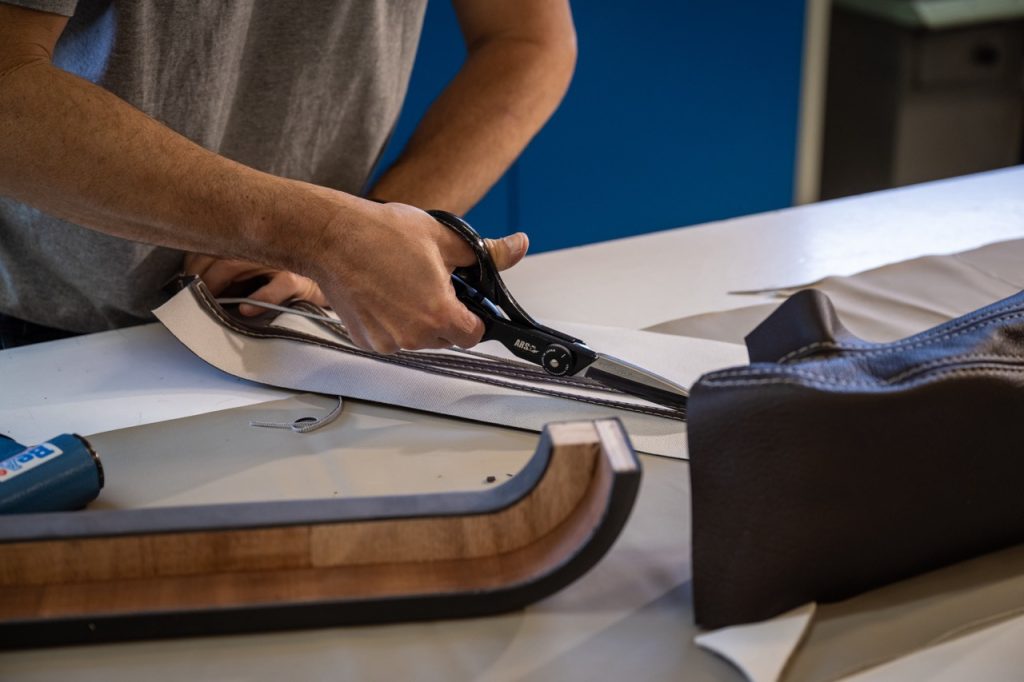
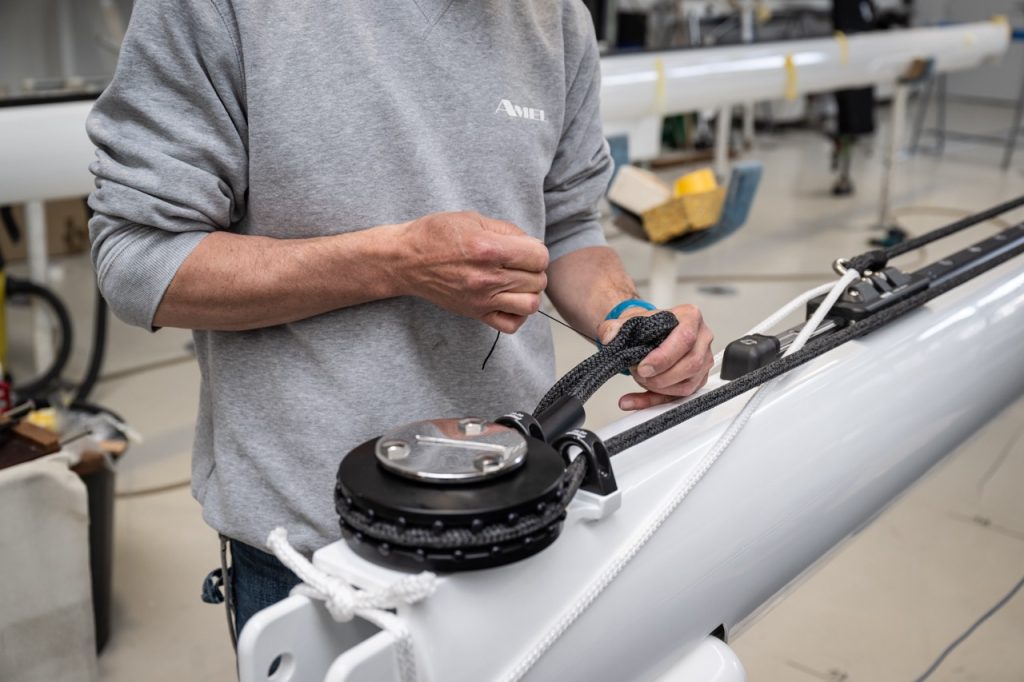
BOAT FITTERS
Boat fitters are responsible for installing the various items needed for navigation and manoeuvring (cleats, winches, pulleys, halyard locks, chain plates, etc.), as well as other fittings (guardrails, guard wires, portholes, etc.). They also adjust and check the watertightness of all accessories.
- At the workbench: polishing, cutting metal items
- On board: drilling, sanding, tapping, screwing and bolting to attach fittings to the hull, deck, and masts
LOGISTICS & WAREHOUSING SPECIALISTS
These specialists form the link between the purchasing and production departments. They are responsible for managing the logistics of merchandise. They receive deliveries from suppliers, checking the contents and ensuring conformity. They update the computerised warehouse inventory. They prepare crates of equipment, tools and parts needed for production, delivering them to the relevant building.
- Receiving goods, entering them into the system and stocking them in the warehouse
- Inventory management, updating computer data records
- Preparing and delivering crates of equipment needed for production as specified by the sequence chart
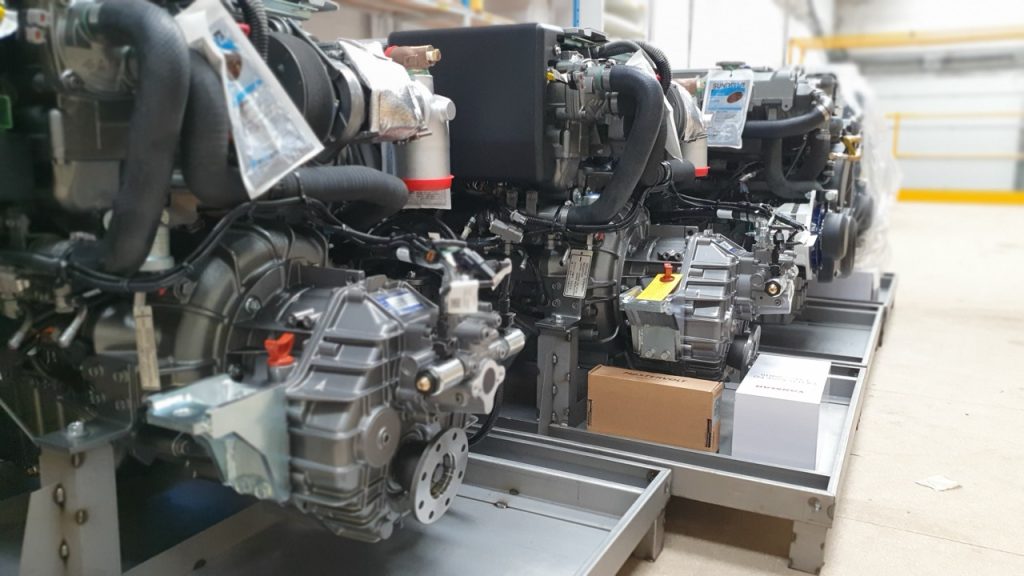
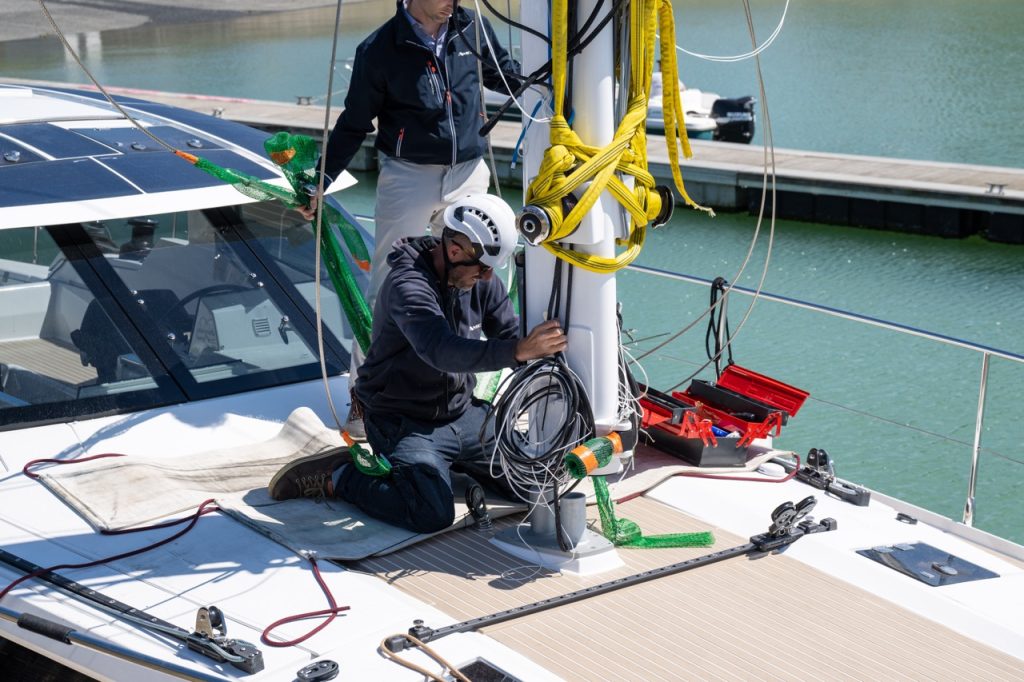
MARINE MAINTENANCE TECHNICIANS
Marine maintenance technicians work as part of the customer service department, carrying out repairs on AMEL yachts. In La Rochelle, they are also involved in setting boats in the water, adjusting the rigging and sails, and preparing yachts for delivery. They are extremely versatile and have knowledge of composite repairs, electrics, mechanics, and marine maintenance in general.
- Repairs to sailing yachts (sometimes having to travel to carry out the work)
- Assisting with setting the boat in the water, adjusting the rigging and sails
- Preparing and commissioning new boats in the port
ÉLECTRONICIEN
L’électronicien prend en charge la préparation et l’installation de toute l’électronique embarquée sur le bateau (radar, traceur, sondeur, antennes, télécommunication, télévision, hifi, caméras), globalement tout ce qui sert de nos jours à naviguer et à vivre sur un bateau de plaisance.
- Définir les phases d’intervention sur l’équipement électronique à partir des informations du dossier client, du dossier technique
- Choisir l’outillage (testeurs, générateur de signaux…) et les matériels (composants électroniques, modules…) appropriés à l’intervention
- Mettre en place et brancher les éléments de l’équipement électronique selon les finalités et les besoins d’utilisation
- Systèmes/équipements électroniques concernés : équipements de détection et d’aide à la navigation, équipement de sonorisation et/ou de vidéo, équipement de télécommunication/alarme et sécurité/téléphonie, électronique de puissance, équipements embarqués, instrumentation/équipements de contrôle et de mesure
- Interventions demandant un permis : habilitation électrique, travaux hors tension (B0, B0V, B1 B1V, H0…), habilitation électrique, travaux sous tension (B1T, BN, BR, H1T…)
STRATIFIEUR GELCOATEUR
Le stratifieur gelcoateur intervient au début du processus de fabrication. Sa première mission consiste à préparer et à appliquer le gelcoat. C’est ce que l’on voit en premier sur le pont ou sur la coque ; c’est la peinture, la couleur que l’on applique directement sur un moule ciré.
- Poste stratification : préparation résine (mélange de produits), découpe de tissus, mise en place des tissus dans les moules, stratification au contact, en injection ou en infusion
- Poste collage : assemblage de pièces bois/composites avec colle type polyester, dépolissage et préparation des pièces, application et stratification de bandes de collage
- Poste gelcoateur : application au pistolet airmix ou à godet de gelcoat sur les moules
- Poste gelcoateur de finition : préparation de pièces (ponçage, masquage), application du gelcoat, reprise de finitions (ponçage eau) et lustrage de pièces
- Poste préparateur : rangement stock, dépotage de produits dans d’autres conditionnements et prédécoupe de tissus.








